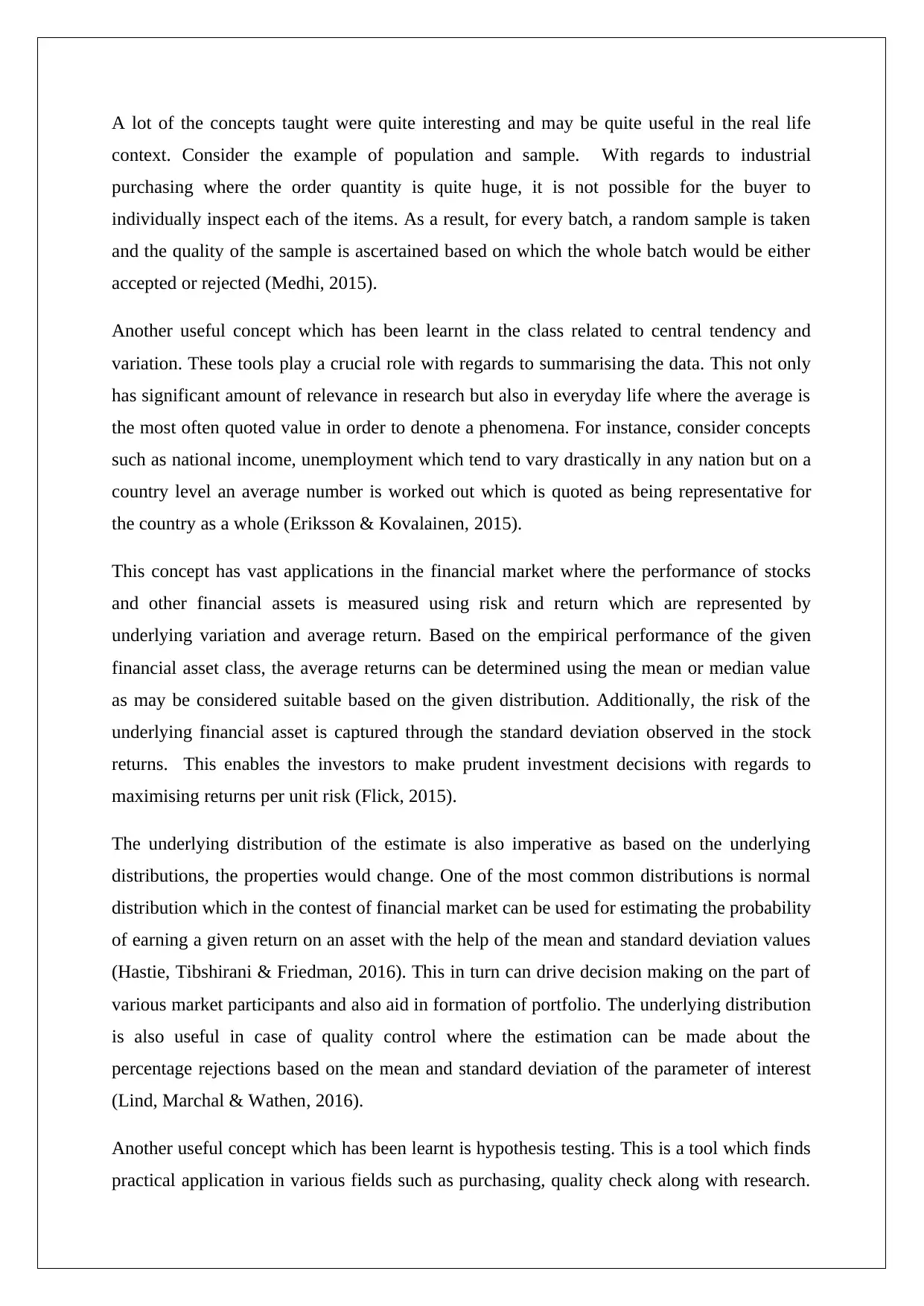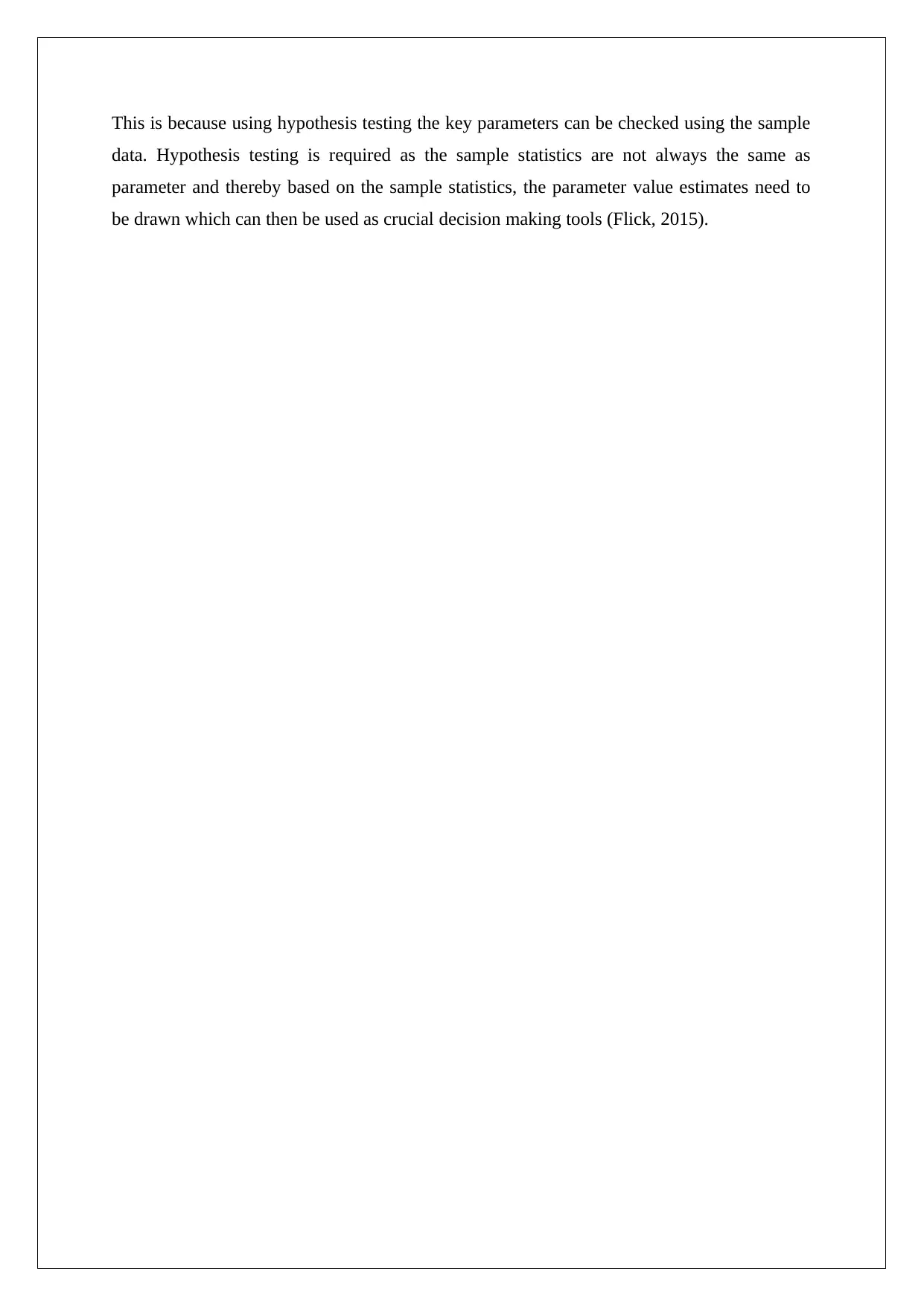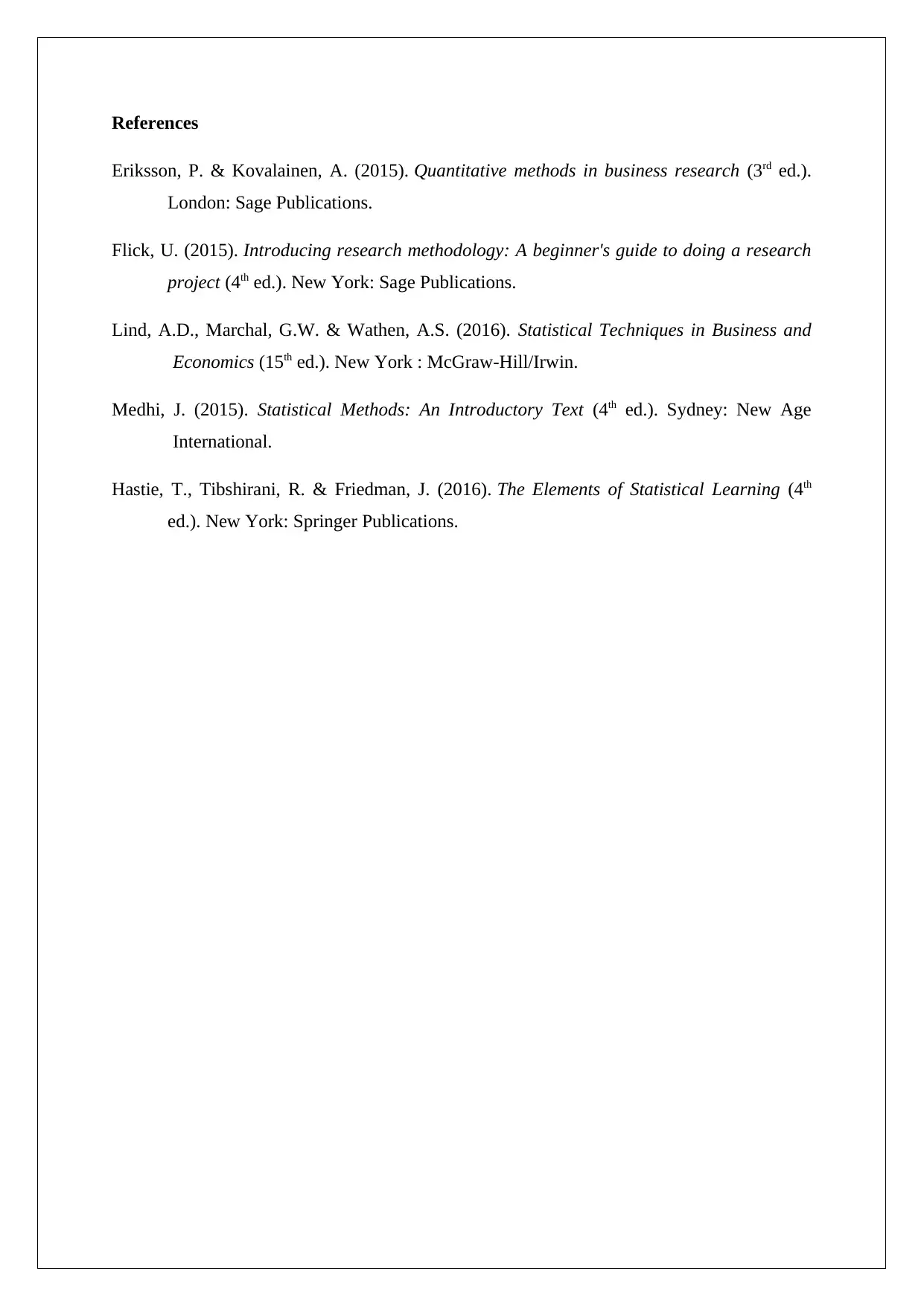Review of Statistical Concepts with Real-World Examples in Business
VerifiedAdded on 2023/06/03
|4
|711
|469
Homework Assignment
AI Summary
This assignment provides a review of essential statistical concepts, emphasizing their practical applications in various fields, particularly business and finance. It begins by discussing the concepts of population and sample, highlighting their relevance in industrial purchasing and quality control. The paper then delves into central tendency and variation, explaining how these tools summarize data and are crucial in research and everyday life, using examples like national income and financial market analysis. The concept of normal distribution is also examined, along with its use in estimating probabilities in financial markets and quality control. Finally, the assignment covers hypothesis testing and its applications in purchasing, quality checks, and research, emphasizing its role in drawing parameter estimates from sample data for decision-making. The paper references several statistical textbooks to support its concepts.
1 out of 4











![[object Object]](/_next/static/media/star-bottom.7253800d.svg)